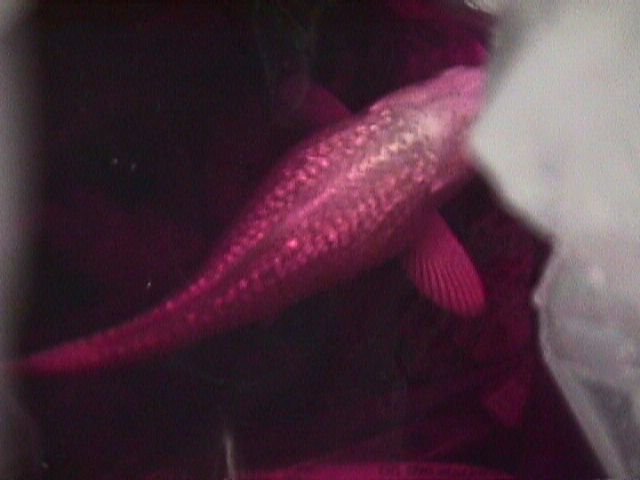
Potassium Permanganate III
Potassium Permanganate KMnO4
– by Doc Johnson
Ingredients:
- One pound of granular or crystalline potassium permanganate (KmnO4)
- One pond, freshly cleaned of debris, bottom-detritus, dead fish or uneaten food.
- One group of fish with flashing, red spots, spider web skin lesions, fin rot, sliminess, Ulcers, fungal lesions.
Precautions:
- The presence of large amounts of organic debris, uneaten food, dead fish, leaves, dead plants will cause the potassium to spend it’s energy on oxidizing the organics, not on the parasites or ulcers.
- The presence of dechlorinator in the water will inactivate the treatment. (Latency 2 days)
- The presence of Hydrogen peroxide will inactivate treatment. (Latency 3 days)
- Potassium can kill a lot of algae, increasing oxygen demand, especially in warm water over eighty degrees.
How to do this:
Day One
1. Bypass filter but increase circulation and aeration.
2. Apply one level teaspoon of granular potassium permanganate per six hundred gallons of water. Do not stand down wind as the powder is added. Do not get in eyes. Do not get on skin. Do not breathe powder.
3. Wait until water changes from purple/pink into a brown or amber color.
4. Resume filtration and keep up all circulation.
5. Apply standard OTC Hydrogen Peroxide 3% USP at a rate of one quart per five thousand gallons of pond water. In one hour you’ll have clear water with no residual evidence of Potassium staining.
Day Four
1. Bypass filter but increase circulation and aeration.
2. Apply one level teaspoon of granular potassium permanganate per six hundred gallons of water.
3. Wait until water changes from purple/pink into a brown or amber color.
4. Resume filtration and keep up all circulation.
5. Apply standard OTC Hydrogen Peroxide 3% USP at a rate of one quart per five thousand gallons. In one hour you’ll have clear water with no residual evidence of Potassium staining.
Days Eight & Twelve
Exact repeat of Days one and four.
 What about flukes which hide in the filter?
What about flukes which hide in the filter?
If you did one treatment of PP and bypassed the filter, the flukes could hide out in the filter.
If you do the fluke regiment of potassium, which is based on a knowledge of the life cycle of the fluke and knowing that the emerging fluke REQUIRES a meal shortly after birth or hatching, **serial** PP treatments make continued infestation of the filter impossible.
Again, one treatment with filter bypass will spare adults and larvae in the filter, however these must feed, and so will move into the pond to do so. Three to four days later – before they can reproduce a complete egg-to-egg cycle – you treat again and kill 99% of the ones left. Still, in case one lives in the filter, the third and fourth treatments are final.
Always, if your filter is matched to the pond, bypass it for these treatments.
If you’re over filtering, you can spare the bacteria and needn’t bypass. At your own risk.
Doc Johnson
INDICATIONS FOR THE ABOVE INFORMATION:
- Body Ulcers
- Body Fungus
- Slimy fish
- Fin or Mouth Rot
- NOT Ciliate protozoan parasitism.
The importance of UV Sterilization in the limitation of bacterial infections cannot be over emphasized. Bacterial infections are rare in ponds with Philodina and or plant agglutinins and impeccable water quality.
The importance of Ammonia and pH testing in the limitation of any disease cannot be over emphasized.
“If you were going to use Potassium to combat a ciliated protozoan like Ich or something, you would have to hit the parasite every day for at least five days. There are much better ways to control these organisms. ” Doc Johnson
+ Note From Doc Johnson
“If you’re using peroxide to reverse the potassium, you need to know that the peroxide will remain in the water for days. Adding more and more and more potassium will kill your fish. The protocol at right takes the latency of peroxide into consideration.” ~ Doc Johnson
